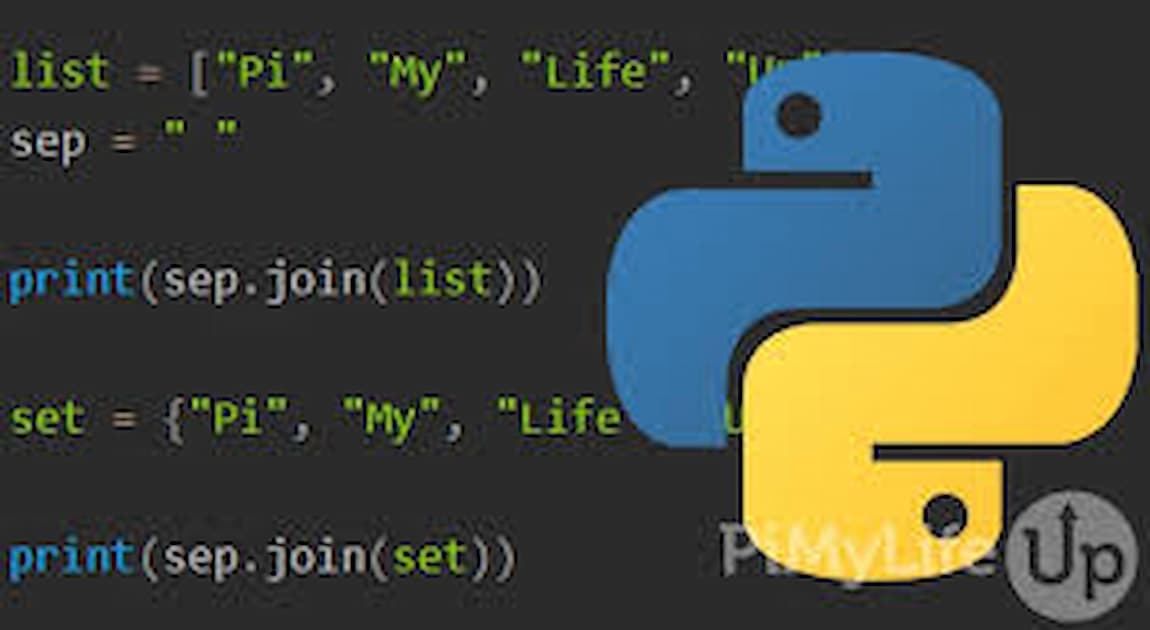Python is known for its simplicity and readability, making it a popular choice for beginners and experienced developers alike. One of the essential methods in Python for string manipulation is the join() method. This method allows you to concatenate elements of an iterable into a single string. In this comprehensive guide, we will discuss how to use join in Python, providing syntax explanations, practical examples, and best practices.
Understanding the Join Method
The join() method in Python is used to concatenate elements of an iterable, such as a list or tuple, into a single string. The syntax for join() is straightforward:

separator.join(iterable)
- separator: The string that will be placed between each element in the resulting string.
- iterable: The collection of elements you want to join.
Basic Usage of Join
To get started, let’s look at a basic example of using join() to concatenate a list of words into a single string:
words = ["Python", "is", "fun"]
sentence = " ".join(words)
print(sentence)
Output:
Python is fun
In this example, the list words is joined into a single string with spaces as separators.
Using Different Separators
The join() method allows you to use different separators based on your needs. Here are a few examples:
Joining with a Comma
items = ["apple", "banana", "cherry"]
result = ", ".join(items)
print(result)
Output:
apple, banana, cherry
Joining with a Hyphen
numbers = ["1", "2", "3", "4"]
result = "-".join(numbers)
print(result)
Output:
1-2-3-4
Joining Without a Separator
Sometimes, you may want to join elements without any separator. In such cases, use an empty string:
letters = ["H", "e", "l", "l", "o"]
result = "".join(letters)
print(result)
Output:
Hello
Best Practices for Using Join
While using join(), it’s important to follow some best practices to ensure your code is efficient and readable.
1. Ensure Elements are Strings
The join() method expects all elements in the iterable to be strings. If the elements are not strings, you need to convert them before joining:
numbers = [1, 2, 3, 4]
result = "-".join(map(str, numbers))
print(result)
Output:
1-2-3-4
2. Choose Appropriate Separators
The separator you choose can impact the readability of your output. Use spaces, commas, or other characters that best suit your data:
data = ["2024", "06", "22"]
date = "-".join(data)
print(date)
Output:
2024-06-22
Advanced Usage of Join
In more advanced scenarios, you might need to join elements from complex data structures like nested lists. Here’s how you can handle such cases:
Joining Nested Lists
nested_list = [["Hello", "World"], ["Python", "is", "fun"]]
flattened = [" ".join(sublist) for sublist in nested_list]
result = " | ".join(flattened)
print(result)
Output:
Hello World | Python is fun
Common Mistakes and How to Avoid Them
1. Joining Non-String Elements
If you try to join a list with non-string elements without converting them, Python will raise a TypeError. Always ensure elements are strings:
items = ["item1", 2, "item3"]
# result = " ".join(items) # This will raise an error
items = ["item1", str(2), "item3"]
result = " ".join(items)
print(result)
Output:
item1 2 item3
2. Incorrect Separator Usage
Make sure the separator is placed correctly. It should be the string you call join() on, not inside the iterable:
items = ["apple", "banana", "cherry"]
# result = items.join(", ") # This will raise an error
result = ", ".join(items)
print(result)
Output:
apple, banana, cherry
Conclusion
The join() method in Python is a powerful tool for string manipulation, allowing you to concatenate elements of an iterable into a single string with a specified separator. By understanding its syntax, usage, and best practices, you can use join() effectively in your Python projects. Whether you’re working with simple lists or complex data structures, mastering the join() method will enhance your coding skills and make your code more efficient and readable.



